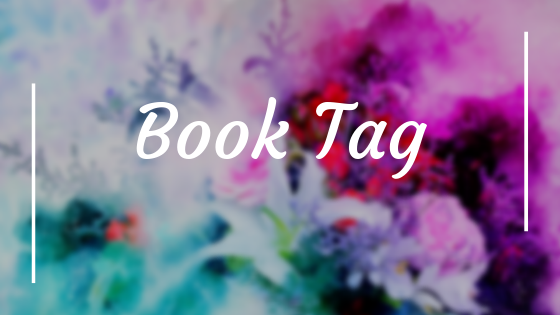
Today’s post is by Maggie Langrick, publisher at Wonderwell Press.
In my role as founding publisher at Wonderwell Press, I meet many aspiring authors who are stuck on the question of whether to write a how-to book or a memoir.
On one hand, they yearn to share their story but haven’t got the platform or literary cachet required to compete in the narrative nonfiction space. On the other hand, they have helpful insights to share but don’t feel comfortable writing a prescriptive book, especially if their advice stems from personal experience rather than professional expertise.
If you’re grappling with this decision, I have good news for you: You don’t necessarily have to choose one over the other—it is possible to share your story in a way that helps people with a specific issue, rather than simply providing an entertaining read. Enter the “memoir with a message.”
A typical memoir leans heavily on entertainment value through the author’s artistry and storytelling skills. But a memoir with a message goes beyond traditional storytelling and pulls universal lessons out of the author’s personal experience. These memoirs do more than recount the author’s life; they distill insights from those experiences into advice or principles that readers can apply to their own lives.
The best argument for considering this format? Due to their practical value, a memoir with a message can be easier to sell to publishers than a straight narrative memoir, because the publisher will also find it easier to sell this type of memoir to booksellers. Some acquiring editors will ask memoirists to retool their manuscript in this way so that it can be shelved in the self-help section. Some good examples of successful traditionally published books that fall into this category include:
- Tough Titties by Laura Belgray (Message: You can be a slacker/late bloomer and still win at life, just like me.)
- We Are the Luckiest by Laura McKowen (Message: Getting sober is worth it; here’s how I did it.)
- Unfollow Your Passion by Terri Trespicio (Message: It’s OK to wing it through life; here’s how I did it.)
- Buy Yourself the F*cking Lilies and Glow in the F*cking Dark by Tara Schuster (Message: You can heal your own mental health issues, just as I did.)
I interviewed three of the above authors on my podcast, The Selfish Gift, and in each case, the author told me that she initially pitched a straight memoir in her book proposal before her agent or acquiring editor pressed her to boost the prescriptive elements to make it an easier sell.
Each of these is, in essence, a book of personal narrative that straddles the line between memoir and self-help, though it’s worth noting that each one leans in one or the other direction. The first two are memoir-leaning but clearly speak to specific issues that the author shares with readers, and are positioned as books you would read to help yourself make a shift. The second two lean into self-help but are heavily built around the author’s personal story rather than professional credentials.
Here’s how you can craft a memoir that not only shares your story but also offers the guidance that readers of self-help books are seeking.
Define your core message
Begin by identifying the central message you want to convey through your memoir. What are the lessons you’ve learned from your life experiences that you believe can help others? This message should be a universal truth or insight that extends beyond your own story to connect with a broader audience. Whether it’s overcoming adversity, finding resilience in the face of loss, or mastering the art of happiness, your message will serve as the backbone of your memoir, giving it direction and purpose.
Structure your story strategically
The structure of your memoir is crucial in weaving your personal experiences with self-help elements. Unlike a traditional autobiography, a memoir with a message should be organized around key themes rather than sticking to a chronological sequence. Each chapter should focus on a specific aspect of your experience and relate it back to your central message. Use your personal stories to illustrate these themes, and conclude each chapter with reflections or lessons that elevate the narrative from mere storytelling to insightful guidance.
Incorporate teachable moments
As you recount your experiences, highlight moments that taught you valuable lessons. These moments should serve as stepping stones in the narrative, providing not only a deeper understanding of your journey but also offering readers practical takeaways. For instance, if your memoir focuses on personal transformation, share the challenges and breakthroughs that shaped your path, and distill these into lessons that the reader can apply in their own life.
Engage with honesty and vulnerability
The power of a memoir lies in its authenticity and emotional truth. Be honest and vulnerable in sharing your failures as well as your successes. This authenticity creates a connection with readers, making your advice more credible and relatable. Vulnerability can be a potent tool in self-help memoirs, as it encourages readers to reflect on their own lives and challenges with a new perspective. It also positions you as a peer who has been there, rather than talking down to your reader, or coming across as preachy or professorial.
Use reflective questions and exercises
To enhance the self-help aspect of your memoir, consider including reflective questions, prompts, or exercises at the end of chapters. These tools invite readers to engage actively with the material, apply the lessons to their own lives, and facilitate personal growth. This interactive element can transform your memoir from a passive reading experience into a dynamic tool for personal development.
Maintain a positive, inspirational tone
Your tone should inspire and motivate. Even when delving into difficult subjects, don’t show up to the page with an axe to grind. You’re not writing to unload unresolved trauma or resentment on your reader, but to serve as an illuminating example of growth and healing. Highlighting the positive changes in your life as a result of your experiences can motivate readers to seek similar transformations in their own lives.
Give each element the care it deserves
A caveat: This is not a superficial remedy for an otherwise weak manuscript. Many industry experts (including Jane Friedman) are cautious about recommending this approach and may even steer new writers away from it because it’s easy to view this as a quick fix. Your book—whether it is a straight memoir, a memoir with a message, or a prescriptive nonfiction book—needs to meet a very high bar to be successful, and there is no literary device clever enough to turn a bad book into a bestseller.
One thing all the titles I’ve held up as examples in this article have in common is that they are excellent books: well-written, insightful, entertaining, and instructive to various degrees. Every element in your book needs to be of high quality, so give each one the care it deserves. Conduct thoughtful research if you are taking a journalistic approach to your message. Thoroughly test any advice or instructions you may be providing to ensure your prescriptions are truly effective and relevant to a majority of your readers. And, of course, be sure to tell a great story rich in insight, color, drama, sparkling dialogue, and satisfying character development.
When executed well, a memoir with a message offers a unique opportunity to touch lives through the power of personal narrative combined with practical wisdom. By clearly defining your message, strategically structuring your story, and integrating actionable advice, you can create a compelling memoir that stands as a beacon of hope and guidance on the self-help shelves.
Maggie Langrick is the founding publisher of Wonderwell Press, an imprint of Greenleaf Book Group which publishes nonfiction books that help, heal, and inspire. She writes a Substack of personal essays called The Underwire, and hosts the Selfish Gift podcast, a series of intimate conversations with writers, creators, and the professionals who assist them. An editor for more than twenty years, Maggie is also a graduate of Martha Beck’s Wayfinder Life Coach Training program, and focuses her coaching practice on supporting writers and creatives to identify their creative vein of gold and make smart publishing decisions. She lives in Los Angeles, where she hosts a semi-annual book-planning retreat called The Big Leap.






